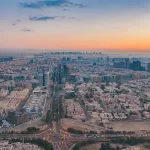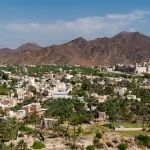Mecca: The Sacred Heart of Islam & A Journey Through Time
Mecca—Makkah al-Mukarramah—is more than just a city. It is the heartbeat of Islam, the spiritual compass that millions of Muslims turn to five times a day in prayer. Nestled in the western region of Saudi Arabia, Mecca is the birthplace of the Prophet Muhammad (peace be upon him) and home to the revered Kaaba within the Masjid al-Haram. Every year, millions embark on a journey to this holy land for Hajj and Umrah, fulfilling one of the Five Pillars of Islam. Yet, beyond its spiritual significance, Mecca is a city of rich history, profound culture, and breathtaking landscapes.
A City Rooted in History and Faith
Where Islam Was Born
The story of Mecca dates back centuries before Islam. It was a major trade hub long before Prophet Muhammad (PBUH) was born here in 570 AD. But everything changed when the Prophet received his first revelation in the Cave of Hira. From that moment, Mecca became the epicentre of a faith that now unites over two billion people worldwide.
The Kaaba: A Symbol of Unity
The Kaaba, Islam’s most sacred site, stands at the heart of the Grand Mosque. According to Islamic tradition, it was originally built by Prophet Ibrahim (Abraham) and his son Ismail (Ishmael) as a house of monotheistic worship. Today, Muslims around the world face this sacred structure in prayer, and during Hajj, they walk around it in a ritual known as Tawaf, symbolising unity and devotion to God.
A Sacred City Surrounded by Majestic Landscapes
Mecca’s geography is as awespiring as its spiritual significance. The city lies in a valley, enveloped by rugged mountains that have stood witness to centuries of history. Among these towering peaks, two are particularly famous—Jabal al-Noor (the Mountain of Light), where the Prophet Muhammad (PBUH) received his first revelation, and Jabal Thawr, where he and his companion Abu Bakr sought refuge during their migration to Medina.
Despite its ancient roots, Mecca has transformed into a modern metropolis. The city’s skyline is now punctuated by the towering Abraj Al Bait Clock Tower, which overlooks the Grand Mosque, housing luxury hotels, shopping malls, and an Islamic museum. The Haramain High-Speed Railway connects Mecca to Jeddah and Medina, making pilgrimages smoother than ever.
Religious and Cultural Significance
The Ultimate Pilgrimage Destination
Every Muslim dreams of visiting Mecca at least once in their lifetime. During Hajj, the city overflows with pilgrims performing sacred rites, from walking between the hills of Safa and Marwah to standing in prayer on the plains of Mount Arafat, where the Prophet Muhammad (PBUH) delivered his farewell sermon.
For those seeking a spiritual retreat outside of Hajj season, Umrah offers a more intimate experience. The best time to visit is between November and March when the temperatures are cooler, making it easier to navigate the holy sites.
10 Must-Visit Landmarks in Mecca
- Masjid al-Haram (The Grand Mosque): The largest mosque in the world, encircling the Kaaba and the site of daily prayers for millions.
- Kaaba: The sacred black-draped structure at the center of Islam’s holiest mosque.
- Mount Arafat: The pivotal site of the Prophet’s final sermon and a place of deep spiritual reflection.
- Cave of Hira: The place where the first verses of the Quran were revealed to Prophet Muhammad (PBUH).
- Cave of Thawr: The hideout that sheltered the Prophet and Abu Bakr during their migration.
- Abraj Al Bait Clock Tower: A modern marvel offering a breathtaking view of the Grand Mosque.
- Jannat al-Mu’alla Cemetery: The final resting place of many of the Prophet’s family members, including his beloved wife Khadijah.
- Mina (City of Tents): Where pilgrims stay during Hajj and perform the symbolic stoning of the devil ritual.
- Muzdalifah: A serene, open-air campsite where pilgrims gather pebbles for the Mina rituals.
- Zamzam Well: A miraculous water source that has quenched the thirst of pilgrims for centuries.
Flavors of Mecca: A Culinary Journey
Beyond its spiritual richness, Mecca offers a delightful array of traditional Arabian flavors:
- Ful & Tamees: A hearty breakfast of fava bean stew paired with warm, soft bread.
- Kabsa & Mandi: Fragrant rice dishes served with slow-cooked lamb or chicken, a staple in Saudi cuisine.
- Mutabbaq: A crispy, stuffed pastry filled with spiced meat or vegetables, popular as street food.
- Dates & Zamzam Water: A classic combination, deeply rooted in Arabian hospitality.
- Arabian Coffee (Qahwa): A lightly spiced, golden-hued coffee traditionally served with dates.
A Journey Like No Other
Mecca is more than a destination—it is an experience that transforms the heart and soul. Whether you’re walking in the footsteps of prophets, standing in silent prayer before the Kaaba, or exploring the city’s sacred landmarks, every moment in Mecca is filled with reverence and awe.
For millions, it is a once-in-a-lifetime journey—one that lingers in the heart forever.




